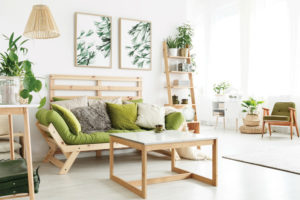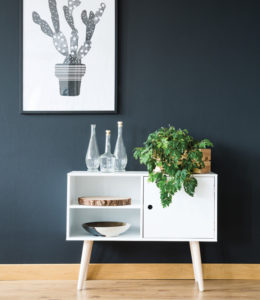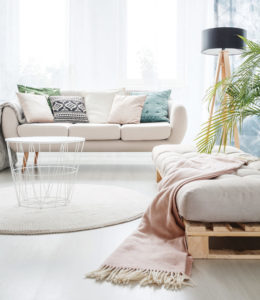The Basics of Micro-Apartment Living
If you want to be in the heart of all that’s happening, micro apartments let you test the waters in a major city. While this lifestyle may be nothing new in hot markets like Manhattan, the popular concept seems to be catching on in most metro markets. Before you dive in, it’s important to know how to do more with less space and what to look for when searching for the right location.
URBAN LEGENDS
From Seattle and San Francisco to Boston and Detroit, much of the attraction to apartment living comes from the action right outside your door. Perhaps that’s why the lifestyle appeals to so many people, including millennials entering the workplace and empty nesters looking to downsize. Good things often come in these pint-sized packages, such as a smaller carbon footprint and a sense of shared community in the newer micro housing developments.
While affordability may be an obvious draw in certain areas, some micro-apartment sites also offer special perks, from pet-grooming stations and communal kitchens, to yoga rooms that double as dance studios. Rentals are common, but there are opportunities to purchase these types of units, too.
BIG DEAL
By definition, micro apartments typically range from over 400 square feet to under 1,000 square feet. In some urban markets there’s been an increase in demand for studio and one-bedroom units; these are especially appealing to millennials who tend to experience more job movement than their predecessors.
Micro-apartment homeowners include those with reverse commutes (they live in the city and work in the suburbs) and those who need a pied-à-terre that puts them in close proximity to restaurants and shops. Because many residents can take advantage of public transportation, Uber, and Lyft, they can often make do without a garage or even a parking space.
DIVIDE AND CONQUER
Well-designed micro units feature different zones for residents to work, sleep, eat, and lounge. The inhabitants don’t intend to spend a lot of time inside, so this creates an efficient living situation for someone who travels a lot or puts in long hours at the office. It can also provide a convenient crash pad during the week or a great location for someone looking to retire in a vibrant city.
If you are ready to make the move and it will be your primary residence, you’ll want to pare down your possessions in advance and maximize existing closets, cabinets, and drawers with organizers. Because getting together with friends in an urban setting often involves meeting at a nearby venue, you probably won’t have to do a lot of cooking or entertaining in your modest residence.
The Perfect Fit
Consider the following factors when searching for the right micro unit for you.
Location is key. Once you’ve selected the city, narrow it down to the neighborhood that meets your needs for work and play as much as possible.
Square footage shouldn’t be your only consideration. Make sure the layout fits the way you live.
Compare amenities from one building to the next. You’ll find perks such as communal spaces, fitness centers, and even lifestyle coordinators for onsite and offsite events.
LESS IS BEST
Major cities offer plenty of accommodations, from local hotels to Airbnb rentals. As a result, you’re likely to have fewer overnight guests. This allows you cut back on all those extra pillows and linens that take up so much space.
Experts say that people only use 20 percent of what they own. If you find this to be true for you, take a good look at what you really use, starting with your wardrobe. Creative storage solutions can keep your favorite items that might not have a place at the moment. You can also ask if your building offers storage for seasonal pieces and bulky items such as bicycles.
LOOK AND SEE
To make the most of what you have, you’ll want to get ideas from online images or a model apartment in your building. Clever solutions can come from those who have experience with this unique type of living arrangement.
Multipurpose pieces are perfect for micro living, as well as small-scale items found at retailers such as Ikea that offer innovative solutions for apartment dwellers. Vintage furniture can also do the trick as many styles were meant to fit in tight spaces. Going small is a big decision, but it might be the best move you will make. Written by Jeanine Matlow. Photography provided by ©iStockphoto.com/KatarzynaBialasiewicz

